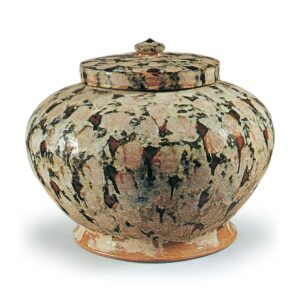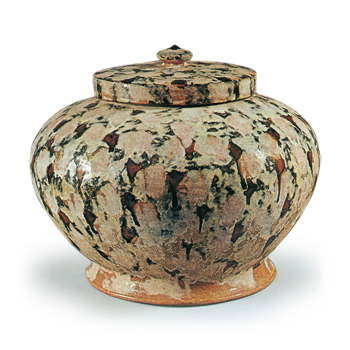
Sansai glazed ware: covered jar.
Excavated from Ichiriyama Tumulus, Takanokuchi-cho, Hashimoto-shi, Wakayama
8th century
Total height 22.8cm, (Lid) height 4.8cm, diameter 15.4cm, (Jar) height 20.4cm, mouth diameter 13.7cm, body diameter 28.1cm
Important Cultural Property
Kyoto National Museum
This jar was excavated in October 1963 from the southern slope of a hill along the Yamato Kaido Road, 900 m northeast of Takanoguchi Station on the Wakayama Line of the Japan National Railways, in a stone chest during land reclamation, and was used as a cremation funerary vessel. It is the largest sancai jar of this type ever discovered. It is made of a rather coarse clay containing iron and fired at a high temperature, making it extremely hard and giving it a shiny yellowish-brown color. The glaze is green, white, and brown, with white glaze filling in the green-glazed staggered bird-arcs pattern common to Shosoin and Nara Sansai, and yellow glaze at the intersections of the green glaze.



